The post-septic peripheral myeloid compartment reveals unexpected diversity in myeloid-derived suppressor cells
- PMID: 38720891
- PMCID: PMC11076668
- DOI: 10.3389/fimmu.2024.1355405
The post-septic peripheral myeloid compartment reveals unexpected diversity in myeloid-derived suppressor cells
Abstract
Introduction: Sepsis engenders distinct host immunologic changes that include the expansion of myeloid-derived suppressor cells (MDSCs). These cells play a physiologic role in tempering acute inflammatory responses but can persist in patients who develop chronic critical illness.
Methods: Cellular Indexing of Transcriptomes and Epitopes by Sequencing and transcriptomic analysis are used to describe MDSC subpopulations based on differential gene expression, RNA velocities, and biologic process clustering.
Results: We identify a unique lineage and differentiation pathway for MDSCs after sepsis and describe a novel MDSC subpopulation. Additionally, we report that the heterogeneous response of the myeloid compartment of blood to sepsis is dependent on clinical outcome.
Discussion: The origins and lineage of these MDSC subpopulations were previously assumed to be discrete and unidirectional; however, these cells exhibit a dynamic phenotype with considerable plasticity.
Keywords: chronic critical illness; myeloid-derived suppressor cells; sepsis; single-cell RNA sequencing; transcriptomics.
Copyright © 2024 Barrios, Leary, Darden, Rincon, Willis, Polcz, Gillies, Munley, Dirain, Ungaro, Nacionales, Gauthier, Larson, Morel, Loftus, Mohr, Maile, Kladde, Mathews, Brusko, Brusko, Moldawer, Bacher and Efron.
Conflict of interest statement
The authors declare that the research was conducted in the absence of any commercial or financial relationships that could be construed as a potential conflict of interest. The author(s) declared that they were an editorial board member of Frontiers, at the time of submission. This had no impact on the peer review process and the final decision.
Figures

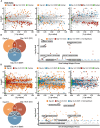
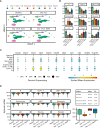
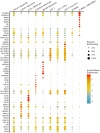
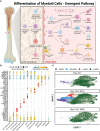



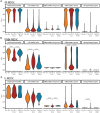

Similar articles
-
Single-Cell RNA-seq of Human Myeloid-Derived Suppressor Cells in Late Sepsis Reveals Multiple Subsets With Unique Transcriptional Responses: A Pilot Study.Shock. 2021 May 1;55(5):587-595. doi: 10.1097/SHK.0000000000001671. Shock. 2021. PMID: 33021571 Free PMC article.
-
Human myeloid-derived suppressor cell expansion during sepsis is revealed by unsupervised clustering of flow cytometric data.Eur J Immunol. 2021 Jul;51(7):1785-1791. doi: 10.1002/eji.202049141. Epub 2021 May 5. Eur J Immunol. 2021. PMID: 33788255 Free PMC article.
-
Graft-Versus-Host Disease Prevention by In Vitro-Generated Myeloid-Derived Suppressor Cells Is Exclusively Mediated by the CD11b+CD11c+ MDSC Subpopulation.Front Immunol. 2021 Oct 14;12:754316. doi: 10.3389/fimmu.2021.754316. eCollection 2021. Front Immunol. 2021. PMID: 34721430 Free PMC article.
-
Roles of Myeloid-Derived Suppressor Cell Subpopulations in Autoimmune Arthritis.Front Immunol. 2018 Dec 4;9:2849. doi: 10.3389/fimmu.2018.02849. eCollection 2018. Front Immunol. 2018. PMID: 30564242 Free PMC article. Review.
-
Role of myeloid derived suppressor cells in sepsis.Int Immunopharmacol. 2022 Mar;104:108452. doi: 10.1016/j.intimp.2021.108452. Epub 2022 Jan 4. Int Immunopharmacol. 2022. PMID: 34996010 Review.
Cited by
-
Unique lymphocyte transcriptomic profiles in septic patients with chronic critical illness.Front Immunol. 2024 Dec 3;15:1478471. doi: 10.3389/fimmu.2024.1478471. eCollection 2024. Front Immunol. 2024. PMID: 39691721 Free PMC article.
-
Innate immune training in the neonatal response to sepsis.Mol Med. 2025 Apr 30;31(1):159. doi: 10.1186/s10020-025-01179-5. Mol Med. 2025. PMID: 40307728 Free PMC article.
References
-
- Stortz JA, Mira JC, Raymond SL, Loftus TJ, Ozrazgat-Baslanti T, Wang Z, et al. . Benchmarking clinical outcomes and the immunocatabolic phenotype of chronic critical illness after sepsis in surgical intensive care unit patients. J Trauma Acute Care Surg. (2018) 84:342–9. doi: 10.1097/TA.0000000000001758 - DOI - PMC - PubMed
Publication types
MeSH terms
Grants and funding
LinkOut - more resources
Full Text Sources
Medical
Molecular Biology Databases

